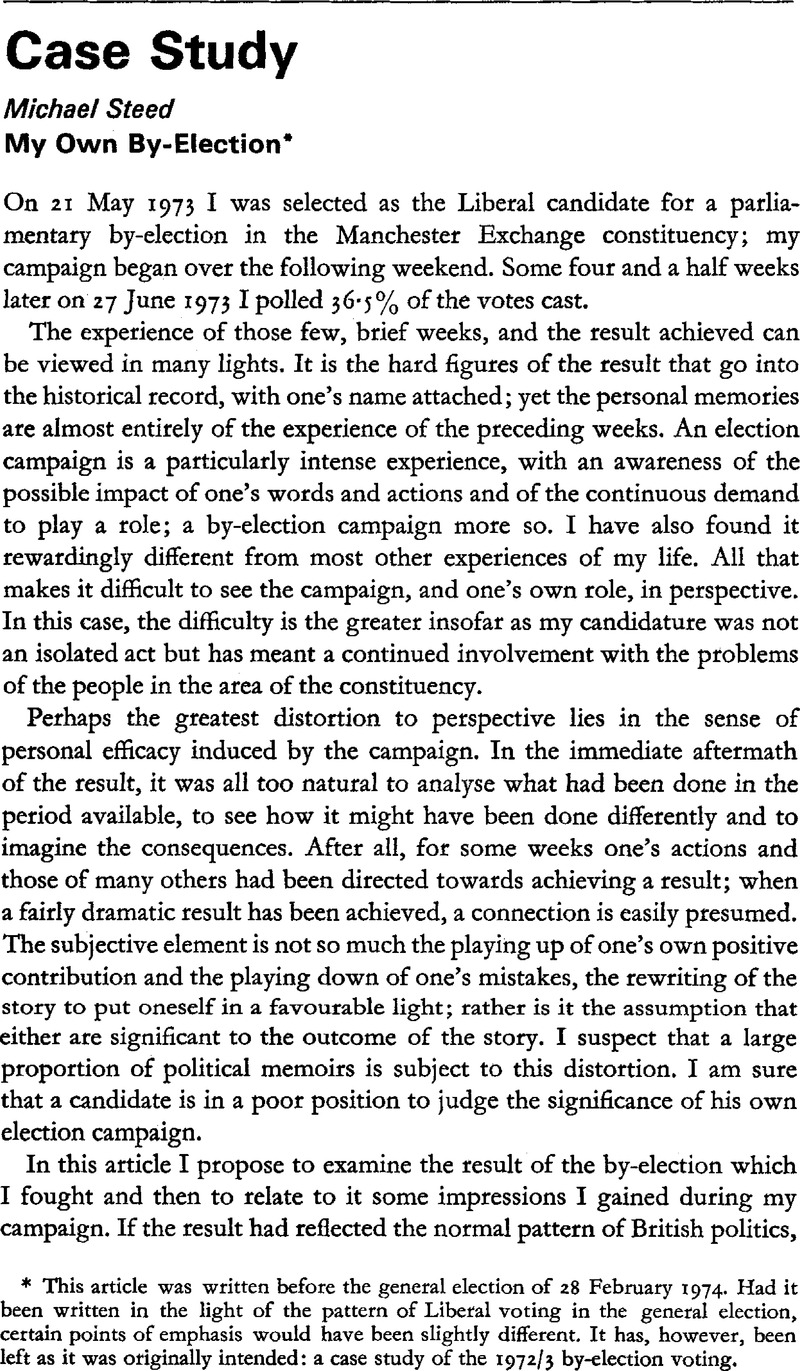Article contents
Abstract

- Type
- Case Study
- Information
- Copyright
- Copyright © Government and Opposition Ltd 1974
References
1 ‘High’ is defined as a Liberal share of the vote over 35% in 1923 and over 25% in 1929 in the nearest equivalent constituency; ‘Low’ as one below both these figures. Such is the consistency of Liberal voting during this period that there are no seats among these twenty-three not consistently high or low.
2 Thus a recent book (By-elections in British Politics, ed. C. Cook and J. Ramsden, Macmillan, London, 1973) covers the Liberal performance in by-elections under the heading ‘Orpington and the Liberal Revival’, concentrating on the former rather than the latter.
3 Including 52 (0.2%) who spoiled their ballot papers.
4 See Appendix B in By-elections in British Politics, op. cit.
5 A Labour by-election leaflet.
6 Liberal campaign press release No. 3, 13 June 1973.
7 Butler, David and Stokes, Donald, Political Change in Britain, Macmillan, London, 1969,Google Scholar Chapter 14.
8 Commission on the Constitution, Research Paper No. 7, HMSO, 1973.
9 Op. cit., p. x.
10 Royal Commission on the Constitution, 1969–73, Vol. II, Grand. 5460–1, HMSO 1973, p. 16.
11 Op. cit., p. 33.
12 Abrams, Mark, ‘Subjective Social Indicators’ in Social Trends, No. 4, 1973,Google Scholar HMSO, 1973.
13 Op. cit., p. 40, Table III.
14 Op. cit., p. 43, Table X.
- 1
- Cited by




